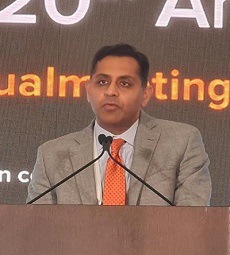
Imperative Care has announced late-breaking data from the Neurovascular Quality Initiative-Quality Outcome Database (NVQI-QOD) evaluating its Zoom stroke solution, which were presented at the Society of NeuroInterventional Surgery (SNIS) annual meeting (31 July–4 August 2023, San Diego, USA) by incoming SNIS president Mahesh Jayaraman (Brown University, Providence, USA).
“The angled-tip Zoom aspiration catheters have become a valuable tool for stroke thrombectomy procedures due to their proven trackability and ability to engage clot effectively,” said Jayaraman. “These real-world data demonstrate that treatment with the Zoom aspiration catheters led to high rates of successful reperfusion in patients with ischaemic stroke, with no safety concerns. We look forward to future NVQI-QOD efforts to analyse valuable real-world data, and evaluate the safety and effectiveness of new and promising technologies in the space.”
As per safety and clinical performance data from 211 patients with large or medium vessel occlusions (L/MeVOs) who were treated with Zoom aspiration catheters, an aspiration-first technique was used in 67.8% of patients, and a combined technique involving aspiration with a stent retriever was used in the remaining 32.2%. Adjunctive therapies including intra- or extra-cranial angioplasty and/or stenting were performed in 9% of patients.
Results from the analysis produced the following findings:
- Median time from arterial puncture to recanalisation was 22 minutes
- Thrombolysis in cerebral infarction (TICI) ≥2b reperfusion was achieved in 91.9% of patients, and in 59% of patients after the first pass
- Overall, TICI ≥2c reperfusion was achieved in 59.2% of patients
- By clot location, rates of final TICI ≥2c reperfusion were 53.8% for internal carotid artery (ICA) occlusions, 58.7% for M1, 57.4% for M2, and 69.2% for MeVO occlusions
- Among patients with 90-day follow-up data, 53.2% were functionally independent (modified Rankin scale [mRS] 0–2)
- The overall rate of symptomatic intracranial haemorrhage (ICH) was 2.8%
“The clinical outcomes from this study are inspiring and prove that the NVQI-QOD registry harbours valuable data, which can be leveraged by researchers, FDA [Food and Drug Administration] regulators, payers and industry to demonstrate innovative medical devices improve patient outcomes,” said Sameer Ansari (Northwestern Medicine, Chicago, USA), NVQI-QOD SNIS patient safety organisation (PSO) medical director.
The NVQI-QOD is a registry developed by the SNIS through its PSO, along with the NeuroPoint Alliance of the American Association of Neurological Surgeons (AANS) and Society of Vascular and Interventional Neurology (SVIN). According to a press release, the primary goals of the NVQI-QOD registry are to provide a platform for driving improvement in stroke care while meeting the demands set by regulatory agencies and evaluating the safety and clinical performance of medical devices used in the treatment of acute ischaemic stroke.
“We are excited about the opportunity to collaborate with NVQI-QOD to reinforce the safety and effectiveness of our unique, angled-tip aspiration catheters for treating patients with ischaemic stroke,” said Ariel Sutton, general manager of Imperative’s stroke business. “Continuing to add to our growing body of evidence with the Zoom stroke solution is a priority for Imperative Care. These data further demonstrate the positive association between the use of the Zoom aspiration catheters with procedure times and successful final reperfusion.”













